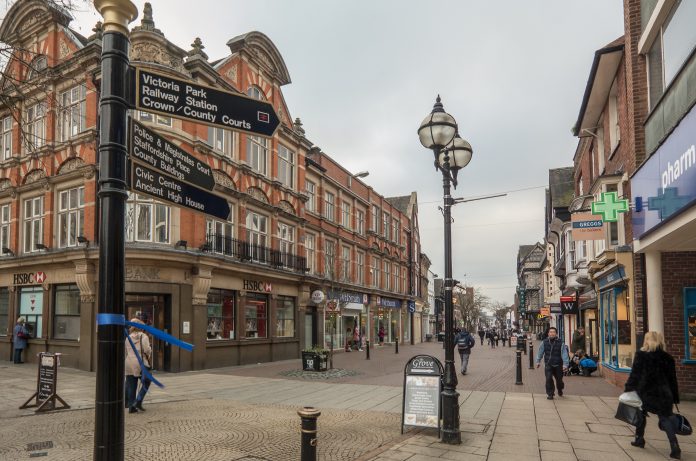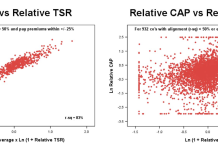Vihan Sharma, Managing Director Europe, LiveRamp, explores why the lockdown pushed Britain’s high street to a tipping point and why we’ll be better for it
When shops opened up again last month, it was a welcome return to in-store shopping experiences for many. But while retail has initially been recording positive numbers of shoppers ready to spend, looking at the bigger picture, it’s clear the pandemic has changed the retail industry forever.
Indeed, data from the British Retail Consortium indicates that around 5000 stores had shut since the onset of the pandemic. But while those shops that survived have reopened, the shift to shopping more online is set to stay.
But this switch in shopping habits to e-commerce should not ring alarm bells for retailers. In fact, moving a greater degree of sales and products online and the data that this yields holds great potential for growth for UK retailers to deliver incremental sales and does not have to come at the expense of the high street.
Our own data from our recent Moving Forward Through Digital report reveals that 53% of retail and hospitality leaders believe that online sales have enabled them to gather first-party data about their customers for business insight or marketing purposes. Retailers have been able to use this data to build and expand on their customer insights, creating a far more detailed understanding of their customers. To thrive over the coming years, these shops must focus on how to utilise the data gathered from e-commerce to serve their customers better and identify new business opportunities.
What’s clear is that the ability to determine the demographic, psychographic or behavioural make up of a typical customer and to use this information to offer products to new customers, gives retailers the potential for much faster growth. Indeed, our research shows that over half (56%) of retail and hospitality leaders believe the data they gather from e-commerce would give them the opportunity to compete more effectively with the UK’s online giants like Amazon and Asos.
E-commerce
COVID-19 has accelerated e-commerce adoption for retailers and encouraged a much larger degree of innovation. From our own research, almost a third (32%) of retailers believe the future of their sector’s growth actively depends on better customer data. Without developing these capabilities, many businesses will remain at a disadvantage, and this inequality will only grow over time. Only by investing in building strong, direct relationships can retailers ensure that consumers continue to have the variety, choice and seamless experience they have come to expect, whether shopping online or on the high street.
But while e-commerce and data provides great potential, it is clear that there is still a great demand for physical retail and the communities it builds around our high streets. Indeed, face-to-face shopping has the huge advantage of providing an experience for shoppers that cannot be easily replicated online, whether it’s trying on clothes, testing electronics or speaking with shop assistants.
Importantly, retailers with a physical presence have an opportunity to go further; they can connect the data gathered in their physical stores with the data gathered through their e-commerce sites and app, using a secure platform to connect online and offline data. This enables them to gather insight from those in-person interactions that online retailers don’t have, and gain a competitive advantage.
Through this approach, retailers can make use of the benefits of an online presence, while also making the most of their physical premises, opening them up to new insights beyond those of an online-only retailer. This might allow a fashion retailer, for instance, to better understand a typical customer journey—from exposure to an online advert to the retailer’s website, to a purchase in-store—helping them to create more effective marketing experience that better serves their customers, driving sales and customer loyalty.
Retailers can go even further with data, and consider collaboration with other brands or strategic partners to further boost their data insights. For example, a furniture brand that is stocked in a department store, but doesn’t have its own physical retail space, can partner with the department store to connect their data using a secure, neutral third-party environment. The brand can then measure the impact of their current digital marketing campaigns, gain a better understanding of their customer demographics, and adjust their marketing strategies to drive sales and give their customers and potentially interested buyers a better overall experience.
Many retailers may be hesitant to use more customer data, concerned with public sentiment, falling foul of regulation or they may be discouraged by the technological complexity. In turn, policy makers and those who want to maintain the diversity of the retail ecosystem must stay up to date with and educate their businesses and constituencies on new and approachable technologies that allow for the safe use of data, and the controls to uphold consumer privacy and choice. Now is the time for high street retailers to realise the value of their data, both online or in person, and invest in putting it to use to inform better business decisions that will help grow their businesses.
We don’t yet know the full long-term effects of the pandemic on our economy, but we do know that the way we shop will never be the same. It is imperative that businesses leverage innovation to drive growth. E-commerce, combined with the effective use of data, allows them to do just that.











